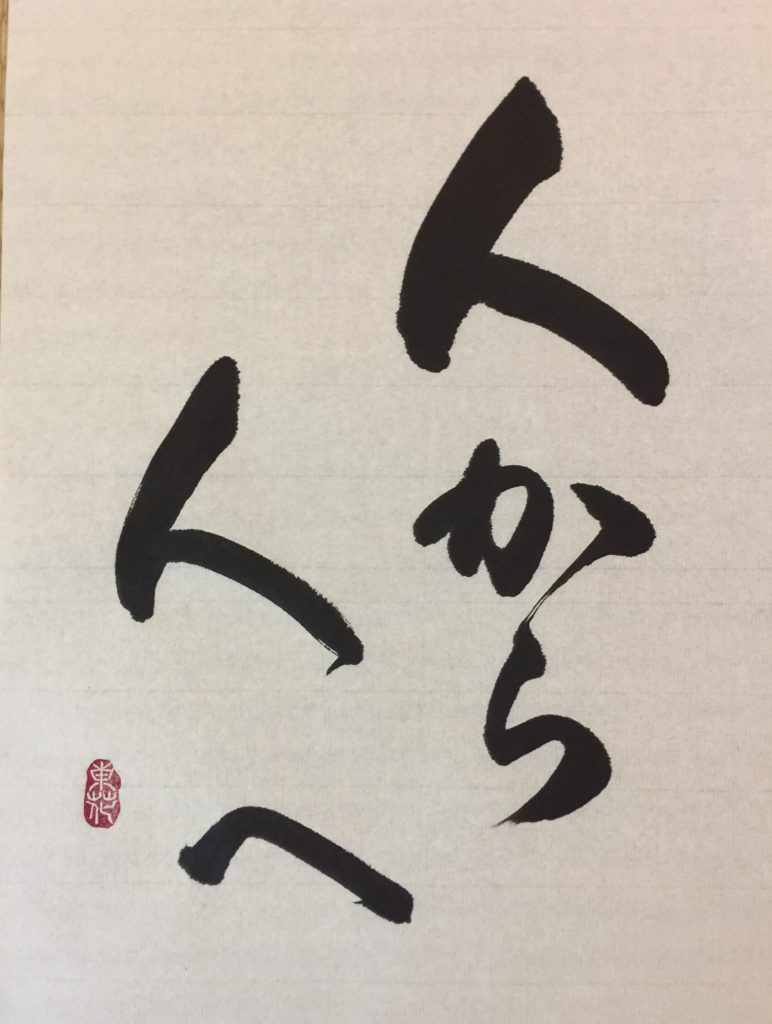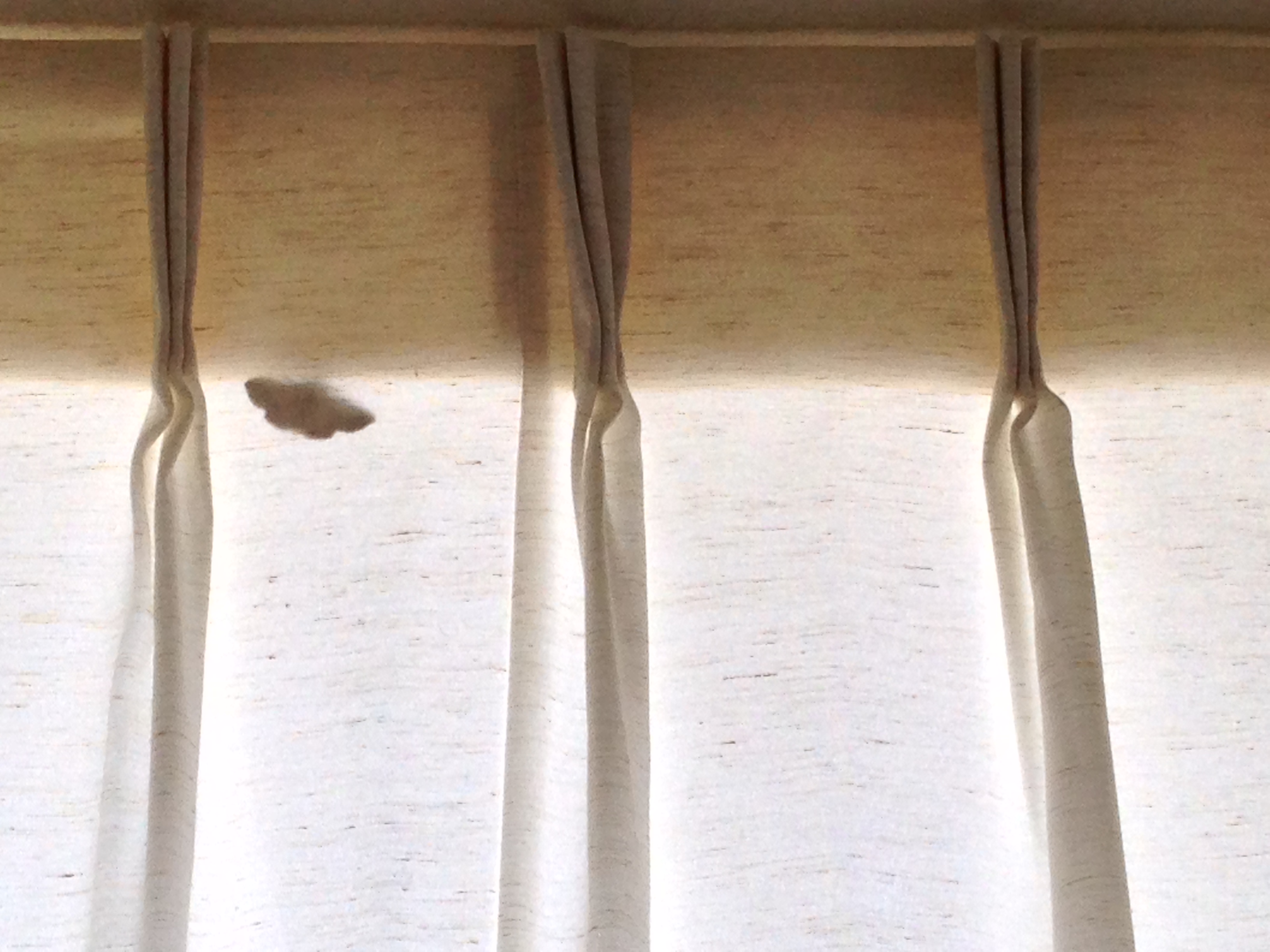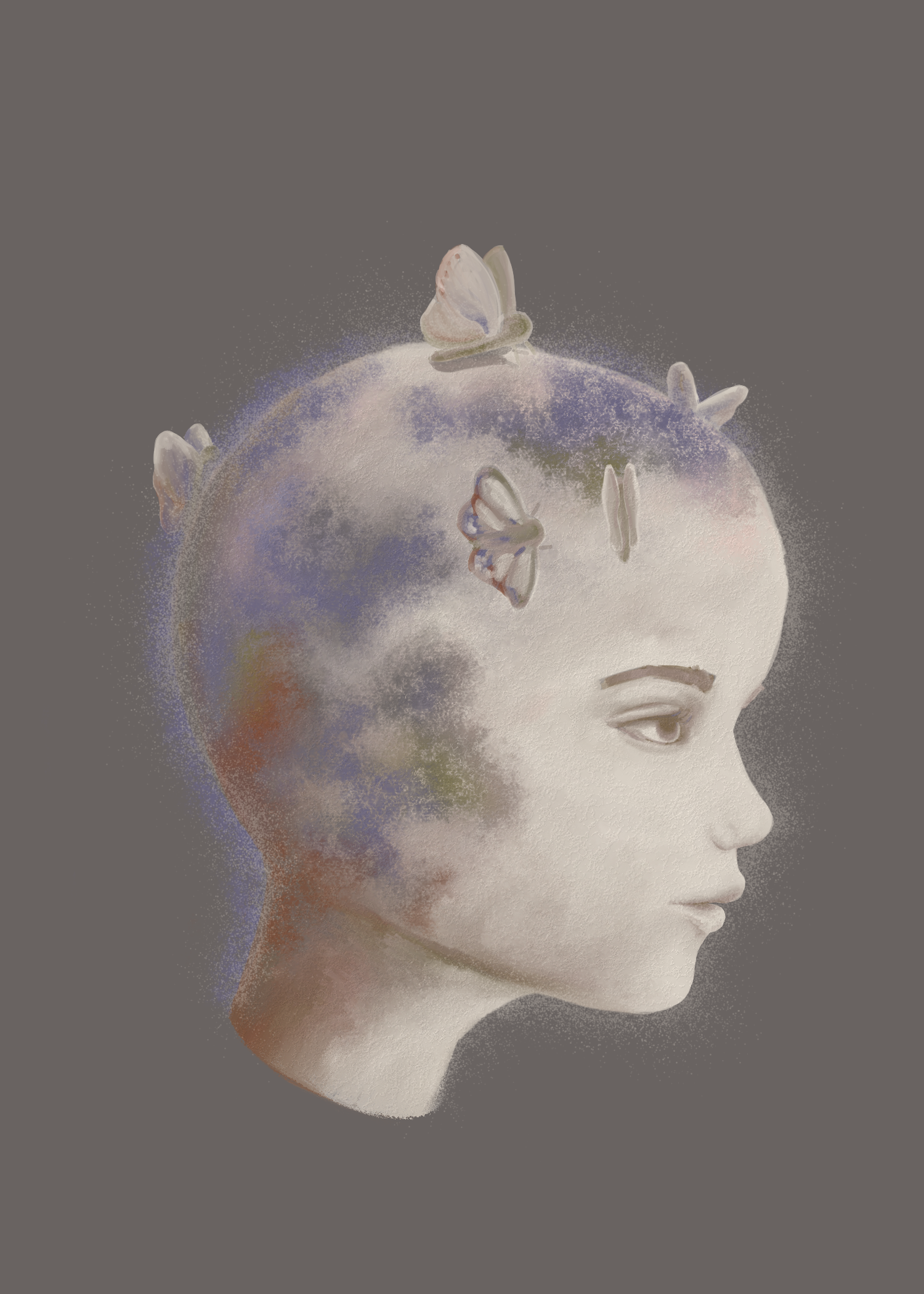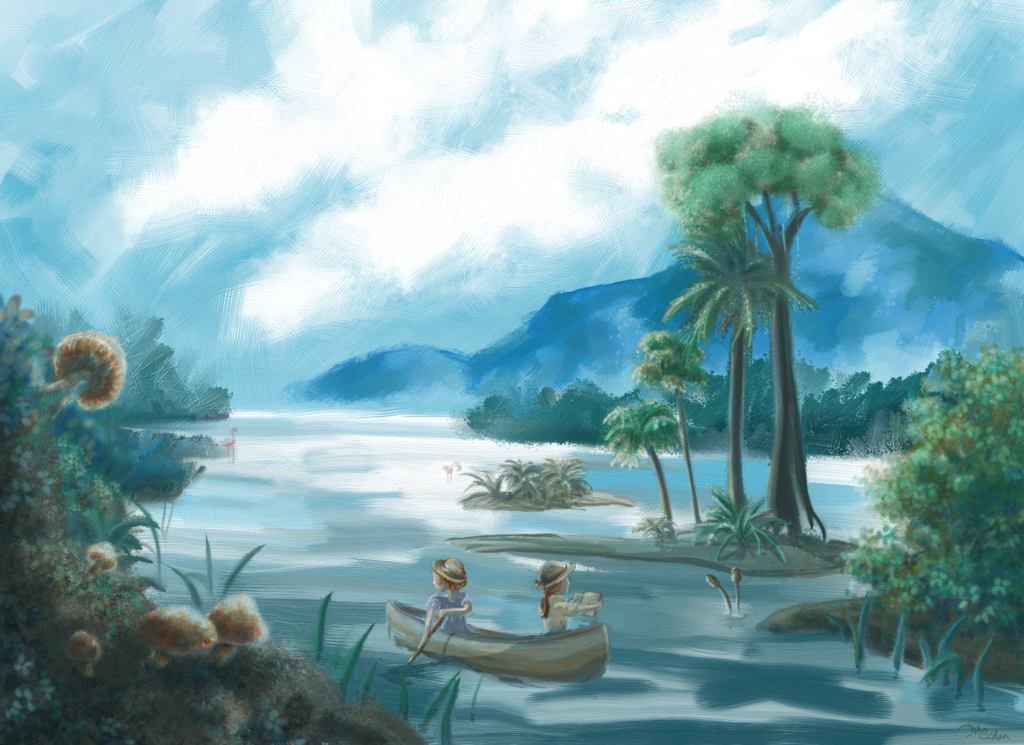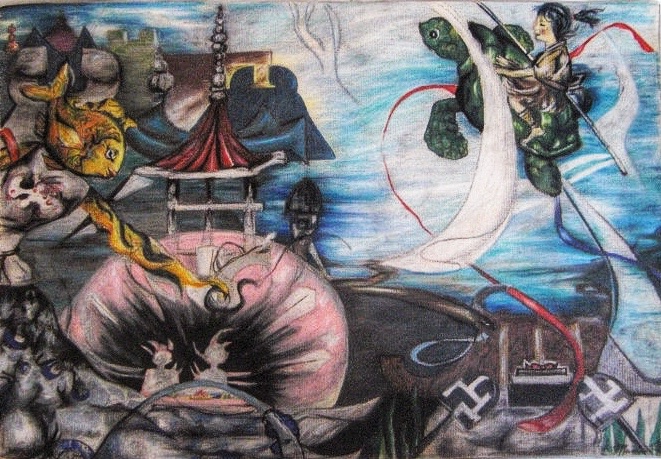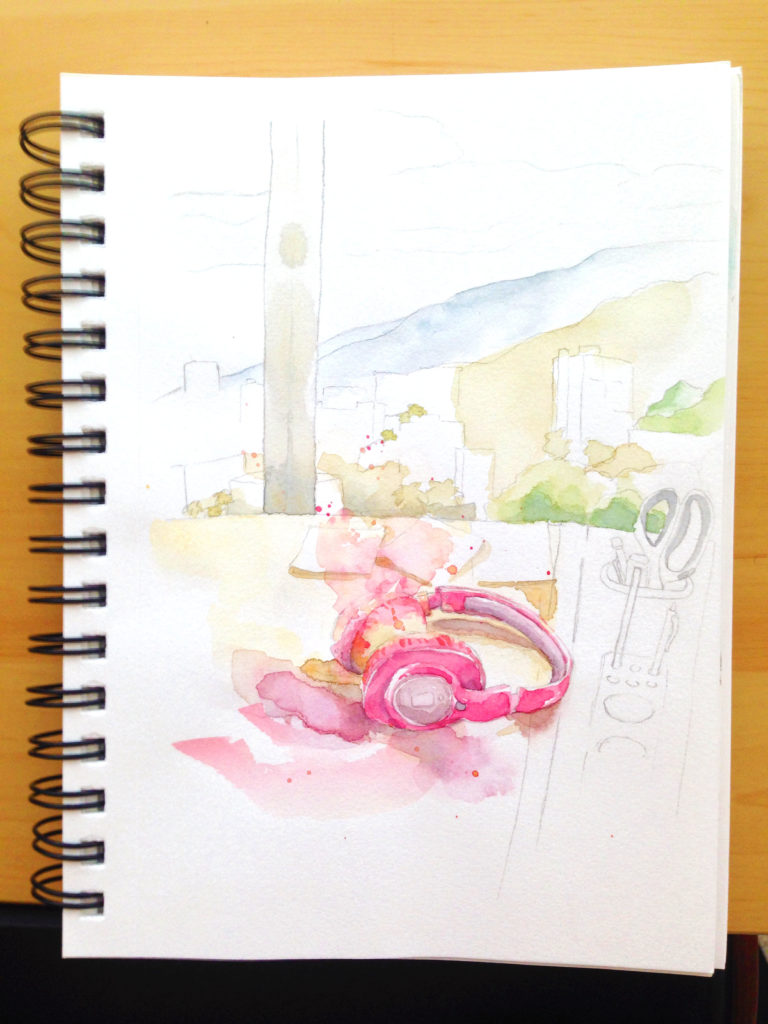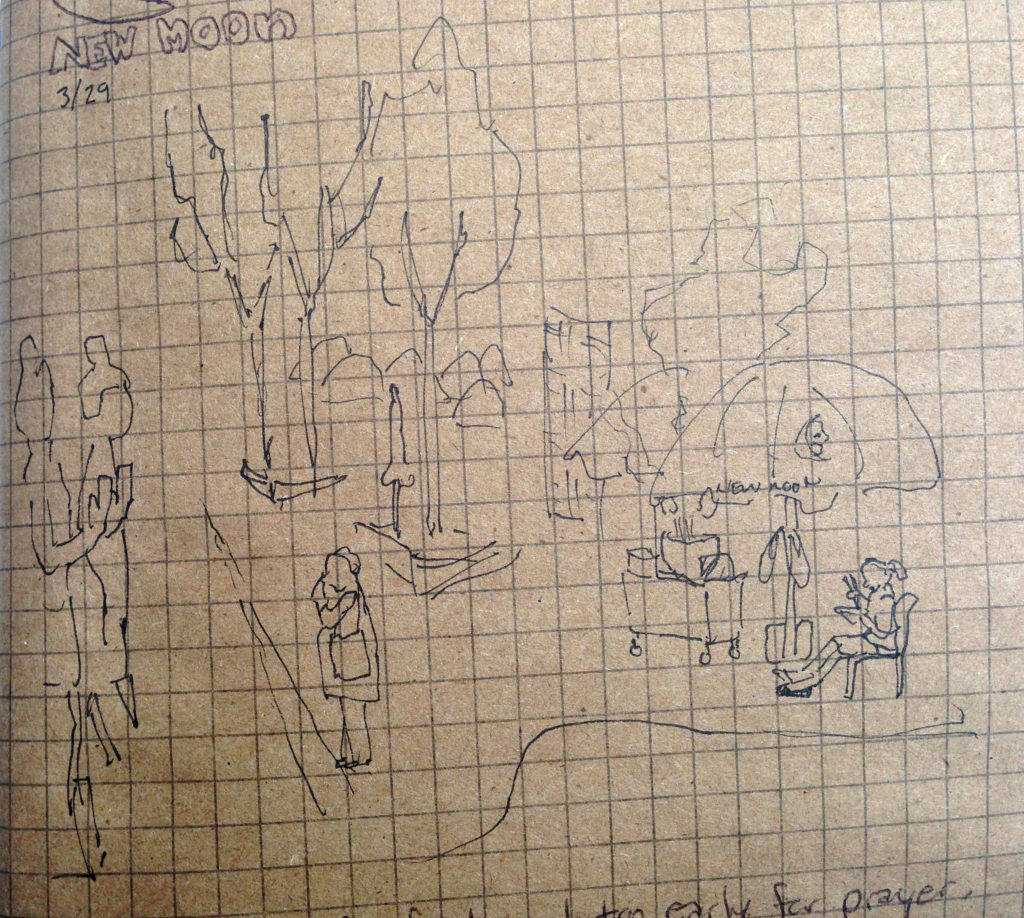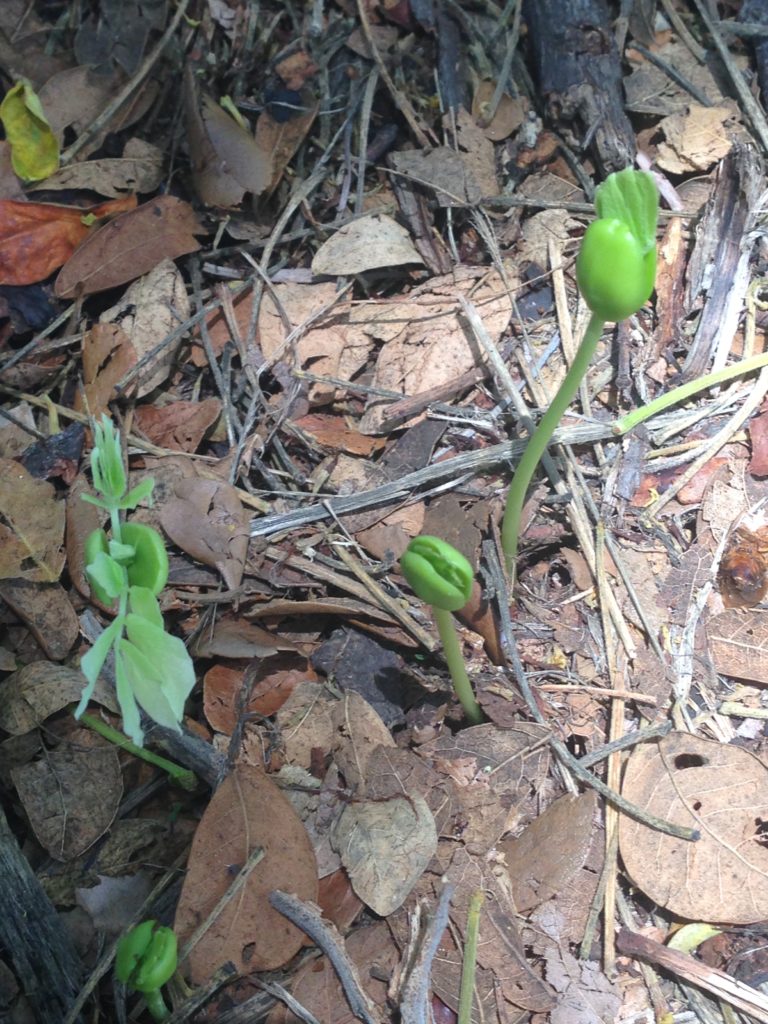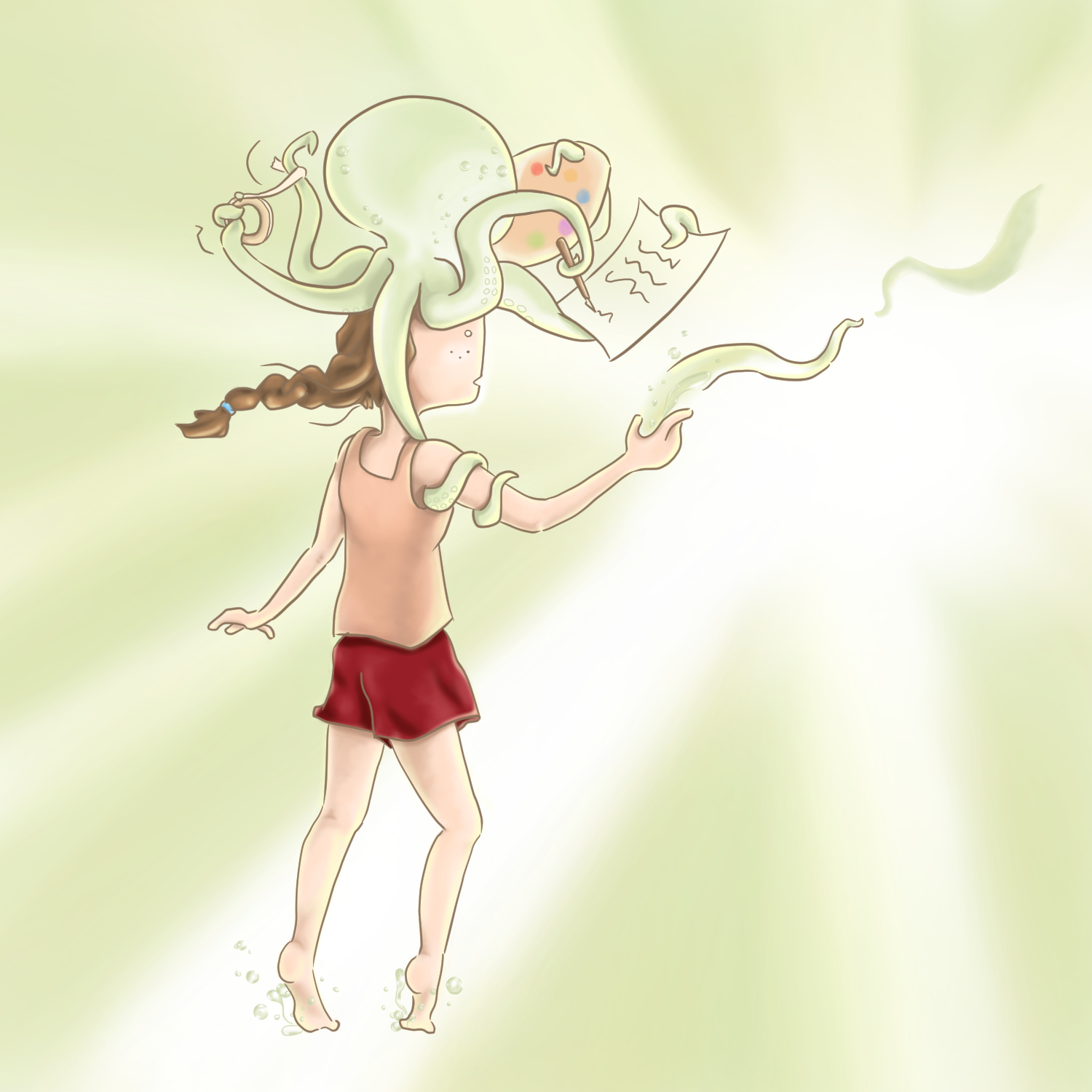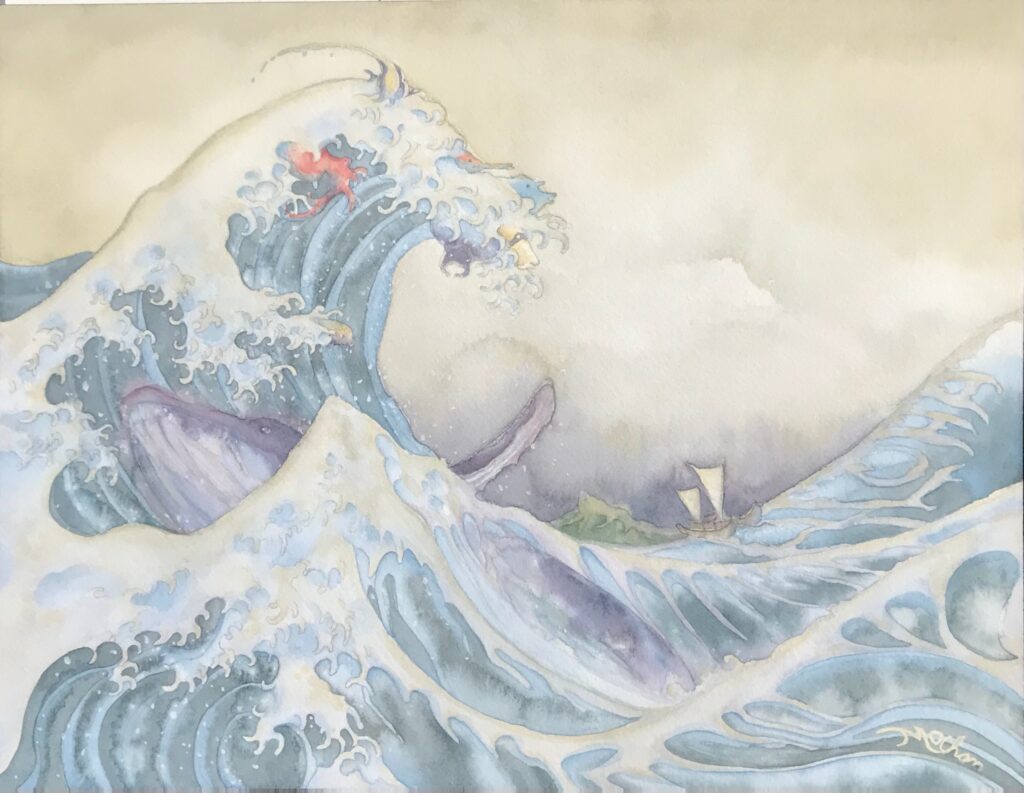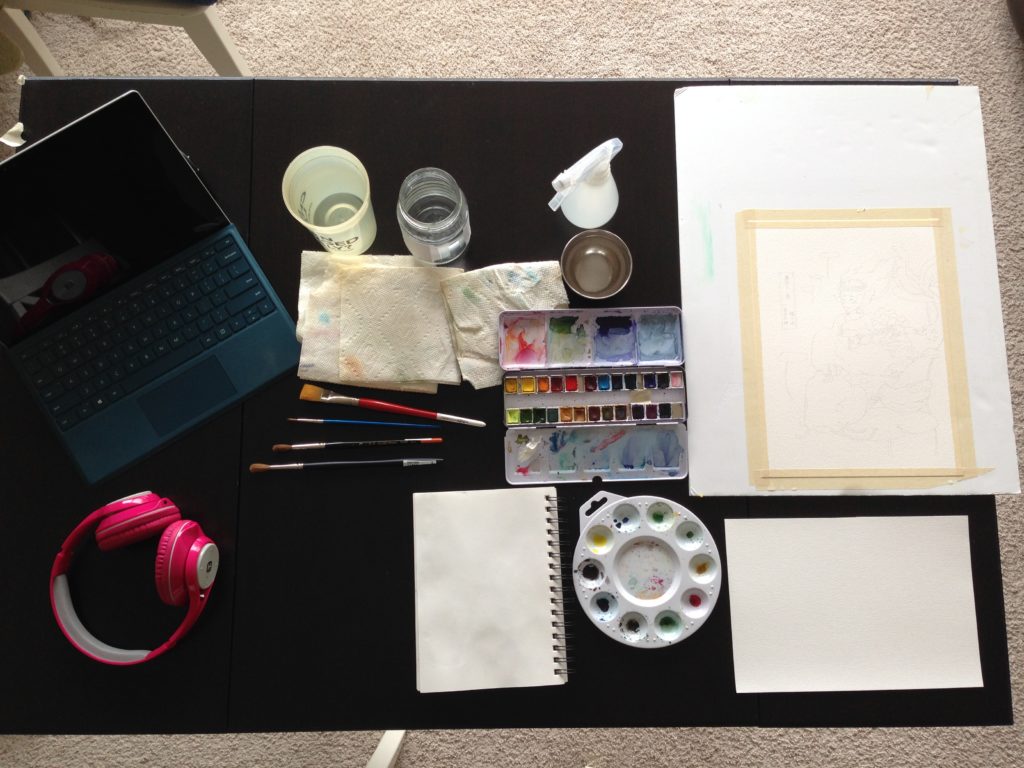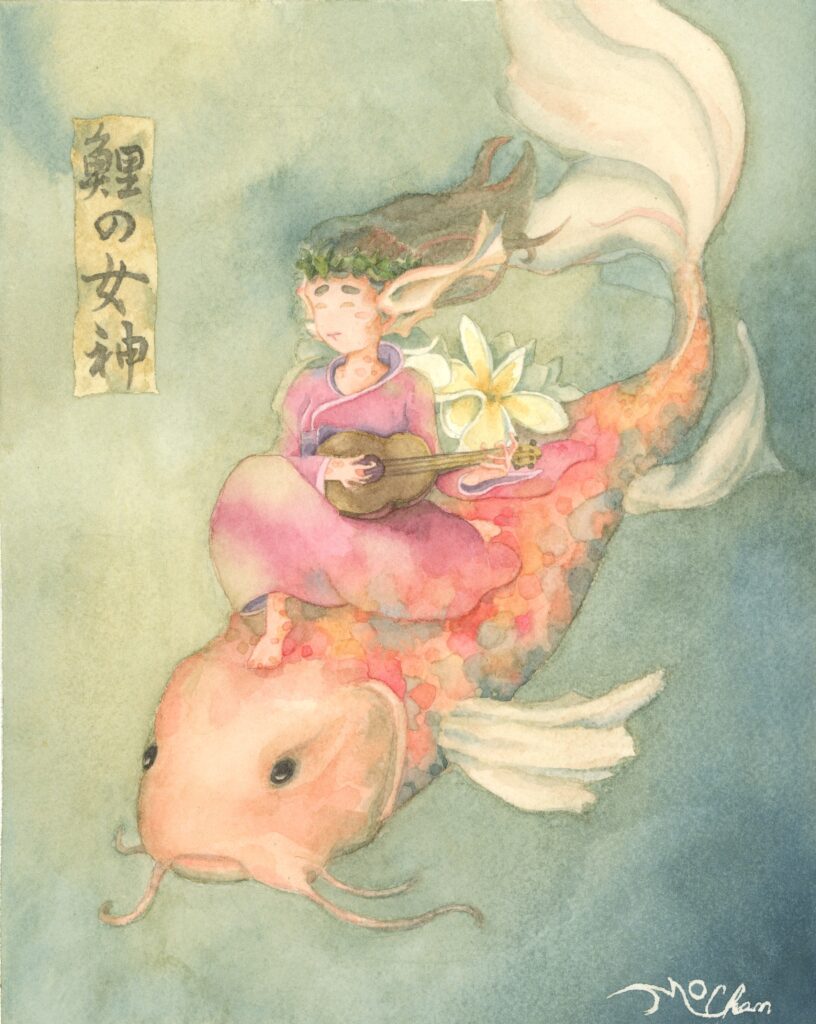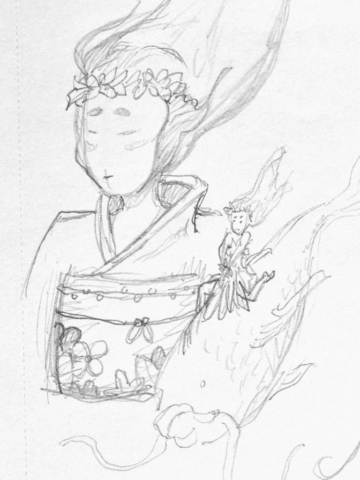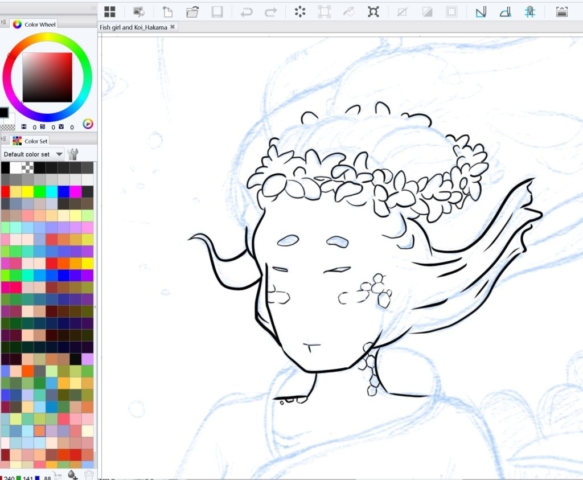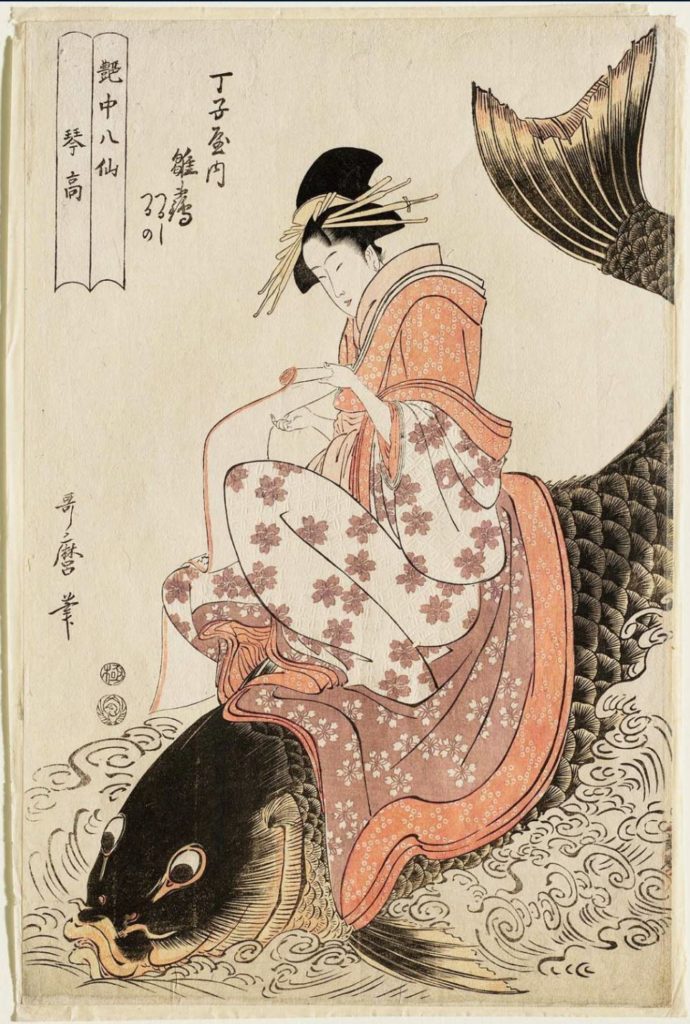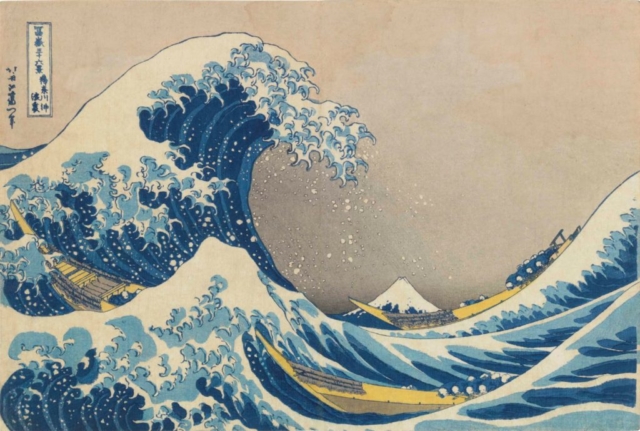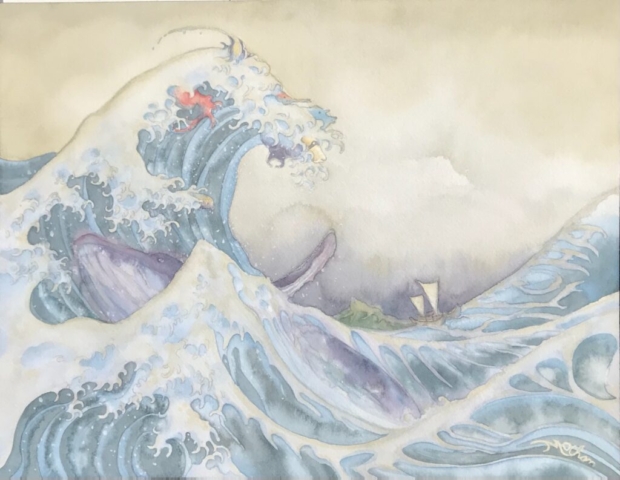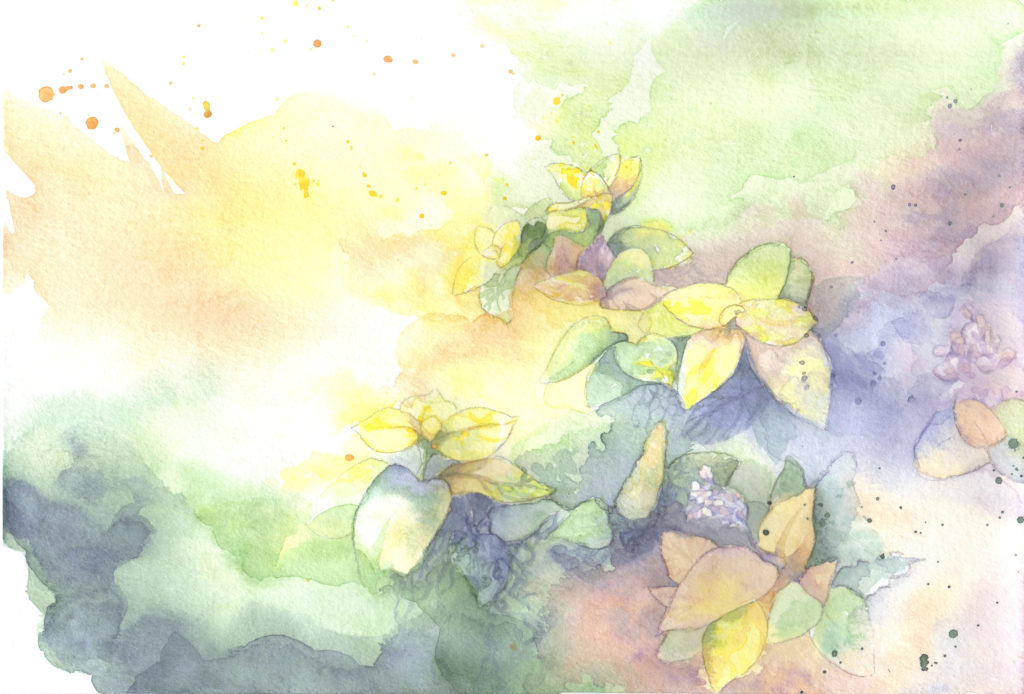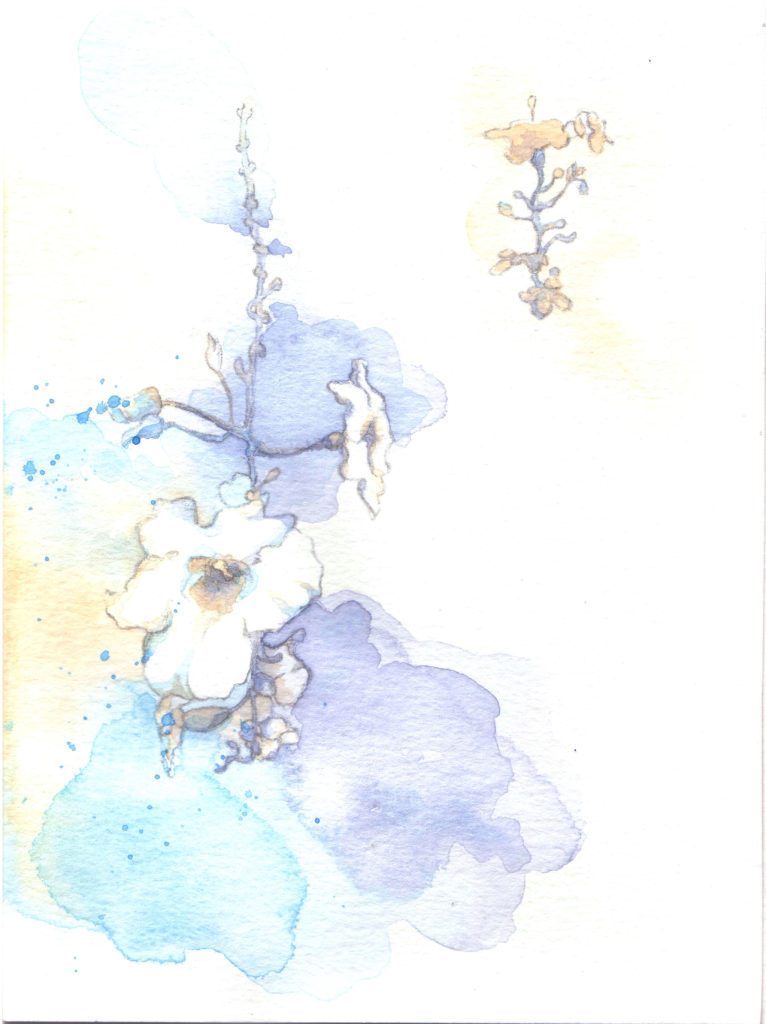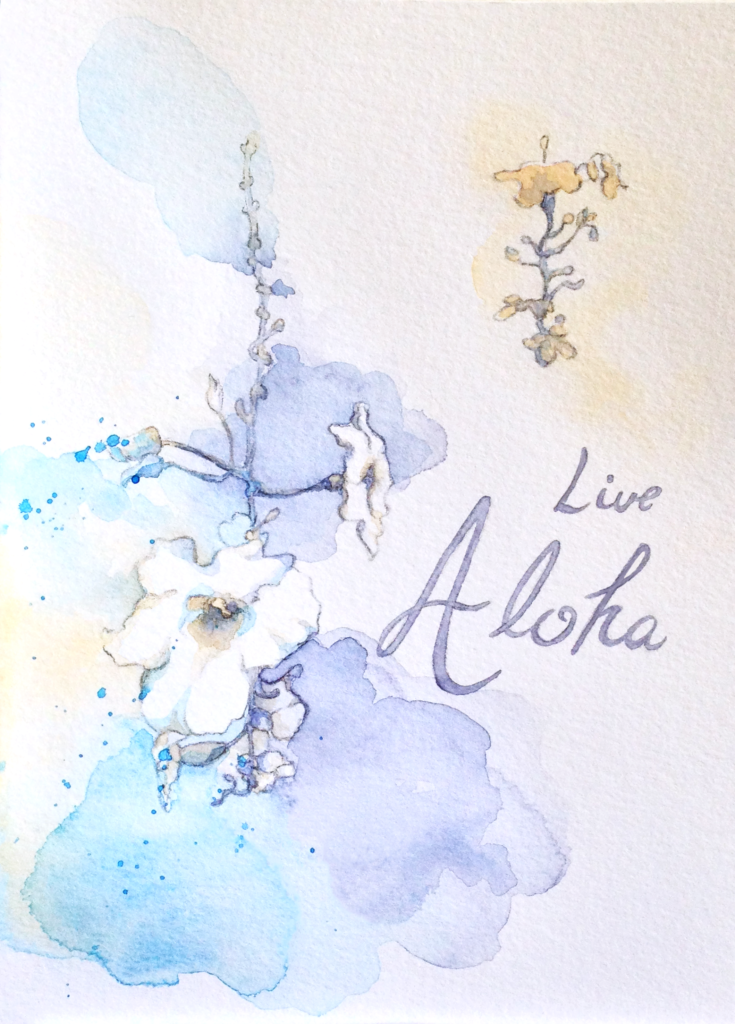Behind Color
When I was a junior in highschool, I was lucky enough to get accepted into an artist apprenticeship program. During the summer, several other students and I worked under the guidance of a professional artist and painted a large mural of a fish jumping out of a hole in a concrete wall. Our days began with loading up various paint brushes, rags, and many tubs of acrylic paint into a truck to drive out to the the mural site. We’d swing from the bars on the three-leveled scaffolding like monkeys, climbing up and down to mix more paint and look at our brush strokes and the contrast of value from a distance. It was summer, but luckily we were shaded under a large road above the walking path the mural faced. However, we still needed to keep spray bottles full of water handy to keep our paints moist as we mixed and color-matched.
It was this hands-on experience with a mentor that taught me how to mix colors, see and recreate values of a colored object–light, medium, and dark. We used large brushes, like the kind you paint a house with, and it goes without saying we got paint all over ourselves in the process. I knew back then as a teenager that I was extremely lucky to have been a part of that art program. I learned each day outside surrounded by nature (the walkway followed a winding creek) and around an abundance of painting supplies and passionate artists.

It was my second summer in the program when I remember suddenly “growing” new eyes. Perhaps it was the many hours of mixing paint that led to my new pair of eyes, I’m not sure. I just remember one day looking at the bark of a tree and seeing every color in it. In that moment I remember it felt like the colors were speaking to me. I had learned to approach Nature as if she were a companion– someone capable of telling me things. I can recall that moment vividly because I’d never seen color in that way before.
Many years later I still paint, although with a new favored medium– watercolor. When I was younger, I did a lot of replications and painting from a reference picture. Whereas, in more recent years I have been struck with impulses to paint things more loosely inspired by a variety of input. It doesn’t suffice to paint things that closely resemble how they are. There is a steady drive in me to paint and create based on the experience of being a companion to what it is I see.

Colors don’t speak to me in words (at least they have not as of yet!). When my mind is behaving well enough, I’ll experience a lot of beauty, wonder, and awe in Nature. In more recent years, I’ll notice an “aliveness” in things that makes me feel closer to them. Not unlike the experience of growing new eyes while looking at tree bark as a teenager. I laughed at myself as I wrote that, and laughed again the other day when I spontaneously admitted aloud that I’m suddenly into birding. Am I opening up to the world, or is the world opening up to me? Whatever the underworkings may be, I just know I now feel a stronger kinship with Nature than I used to. And as a painter, it feels like I’ve been gifted an abundance of kindlewood to keep the inner creative flame burning strong.

So, what is behind color?
Allow me a Tangent
Ok, so maybe watching my mother give birth to my little brother is not exactly an “everyday life experience,” but it illustrates the state of mind I want to convey. Watching a human who was not here, “arrive” and make the transition from womb to the same breathing space was a heightened experience. Being with animals, like a pet cat or dog, can bring on the same state of mind–a living companion or other animated visitor that connects with you on some fundamental level. Another example of an ordinary experience that brings on this particular state of mind, is the feeling of floating on water. We can attune to the sense of the water’s surface tension as well as enjoy temporary relief from the every day–every moment– firm pull of gravity.
What is behind these personal examples of heightened experience, is like what I came to notice in or behind color all around me. Perhaps this has something to do with my desire to translate feelings or states of mind using color.

When one color sits next to another color, and their differing values create movement, it can be so beautiful.. at the very least it is an experience encapsulated in an image. Your eyes start somewhere, move around, and end somewhere. The image may inspire the viewer or stir up associations or general feelings.
This is the work of art.
For a split second, maybe it can make you feel like you are watching a baby come into the world, or that you are sitting with a pet animal, or floating on water.

I wonder if the state of mind I’m trying to convey is getting through here? I imagine people have their own unique equivalent experiences. I guess trying to paint a picture in words is not so different from trying to paint a picture using paint. Both are a medium that we use to express something of a more direct nature. Creativity and the desire for self-expression in some form must play a key role in that which makes us human. That invisible energy that pervades everything yet only hints at its existence through everything.

One last note on color for today. Like the moon, we experience light and the perception of color due to the reflection of sunlight. This tells me that we are beings of the sun in that much of our experience of life is largely dictated by and relative to the sun. What this also tells me is that there is more to life that we do not see because we are “blinded” by the sun. It is ironic that that which is the foundation for our experience of sight–the sun’s light–is also one thing that we cannot (should not) attempt to witness directly. Our eyes can be damaged by looking straight into the sun. So, sight is largely an experience of a second-degree, indirect nature.
We believe in the moon, and can see moonlight, yet it is actually only reflected sunlight that we see. We believe in colors and see that objects appear to have colors, yet science teaches us that color exists as it does because sunlight bounces off objects and the wavelengths of reflected light determines the color we see. It’s so crazy to think that something as colossal as vision is to the human experience is of a second-degree, indirect nature.
What would it be like to see light that is not reflected light from the sun, but light that is emitted by an object itself not in relation to the sun? Like a burning fire flame or glow of fireflies, but from ALL objects. So, when we look at color around us, perhaps we can view it like moonlight, as a kind of hint.. It is second-degree seeing. Does that mean that we can not sense anything deeper and more direct?

To me, the work of art –its function– is to alter our state of mind and state of being so that we can experience companionship and kinship with what is behind color. It’s a quiet presence that our basic five senses lack the precision to experience directly (as of yet). To me, it’s like hearing a purr but never seeing the cat. We can feel the vibration tingle every cell all the way to our center.
Perhaps it’s this purring presence that I first sensed that day when I saw every color in the tree bark.
「和訳」
色彩の裏
私が高校2年生の時、運よくアーティストの見習いプログラムに受け入れられました。夏休みの間、何人かの生徒と一緒にプロのアーティストの指導で大きな壁画を描くことになりました。壊れかけたコンクリートの壁の穴を飛び越えてくる、でかい魚と小川のイメージでした。私たちは、毎日、まず作業の第一ステップとして色んな筆や、ぼろきれなど、たくさんの絵の具をトラックに載せて、壁画の現場へ向かっていました。3階建ての足場の鉄棒からサルのようにぶら下がってよじ登ったり、降りたりして、ペンキの取り混ぜはもちろん、壁画との距離を作ることで筆力や、色彩の明度の確認もしていました。夏の暑い日々でしたが、壁画に面した道の上に大きな道路があったため、都合好く私たちはだいぶ日陰に入っていました。それでも色整合とペンキの取り混ぜのために、ペンキの水分がなくならないように水の入ったスプレー瓶がとても欠かせないものでした。
アートの指導者とこの実践学習の体験を通して、どうやってある色を取り混ぜられるか、そして物の色彩明度を(ライト・ミディアム・ダーク)再現できるようになりました。家にペンキを塗るのと同じ大きさの塗装用のブラシを使って、私たちは体全身ペンキだらけの毎日を楽しく過ごしていました。
その時、ティーンエイジャーだった私でも、そのアーティストの見習いプログラムに参加できて、ものすごくラッキーだとよく分かっていました。毎日、自然に囲まれたところで(壁画は小川沿いの道に面した)たくさんの絵の具で、ほかの熱心なアーティストたちと一緒に芸術を習っている特別な日々でした。
そのプログラムの二年目の夏、ある日に私には「新たな目」が生えてきました。それまで何時間も色彩を取り混ぜたおかげだったでしょうか、よく分かりません。ただ、その時に見た木の皮にすべての色が見えたという、くっきりした記憶があります。木の皮の色彩が私の心に強く訴えかけてきたことを覚えています。まるで大自然は人生を共にして、ものを伝えられる力を持つ「相手」となってきたようです。言い換えると、大自然は私にとって抽象的な存在から、もうちょっと人間性に似たような、いきいきとした特性を持つようになりました。私はこの思い出がよく覚えているのは、こうやって普通のものにあんなにたくさんの色が見えたことがそれまでになかったからです。
あれから20年以上が経っていますが、私はまだまだ絵を描きます。ただ、好みのペンキ性がアクリルから水彩へと変わって来ただけです。もっと若いときは、有名な画家の作品を再現したり、写真を参考にして絵を描いたりすることが多かったです。しかし、近年こうして写実的な絵を描くよりも、触発された瞬間に出来心で、印象に基づく絵をどうしても描きたくなっています。ものの外見をそのまま描いて、本物そっくりに見えても満足できなくなりました。
――色彩の裏にある、目に見えない「何か」を描いてみたくなりました。
色彩は言葉で私にものごとを伝えるわけじゃありません(少なくとも今のところ!)私は心が穏やかな時、大自然の美しさや、不思議や、畏怖の念などに打たれます。近年、万物にいきいきとした特性が宿っていることに気づくようになって、より大自然との親しみを感じています。これはたぶん、ティーンエイジャーの私が木の皮にすべての色が見えて、自分に「新たな目」が生えてきた経験に似ているのではないでしょうか。←こんなことを書いたら自分でも笑ってしまいます。先日、「野鳥観察が好きだ」と自分で初めて気づいて、世界に打ち明けるように声に出したときもくすくす笑いました。
たとえ大自然の神秘が何はともあれ、私が自然との絆をより強く感じるようになったのは確かです。そして、画家として、心にある想像力のとろ火を大きくするための木材いっぱいプレゼントされたかのようにも感じます。
少し話は飛びますが・・・
私は、母親が弟を生むのを見た経験を取り上げたいと思います。その日までいなかった人が一瞬生まれてくるのをじっと観察することによって、いつもの心境とは違いました。あなたも似たような経験はありませんか?私のと違う「形」かもしれないけど、目に見えない「何か」を感じたことを思い出せますか。私はまた犬や、猫などのペットと一緒にいることによって、この特別な心境が引き起こされます。森羅万象と根底で繋がっている気持ちをさせる日常的な経験は、誰でもあるはずだと私は思います。
個人的な例がもう一つ頭に浮かんできます。それは水の表面に浮くことです。人間は誰でも絶えず、毎日重力という力に縛られています。でも、水の表面に浮くと、体そして心が無重力のブランケットに包まれているように感じます。水の中にいるから、音があまりよく聞こえなくなることと共に意識を高めることがあります。水と互いに一致して、重力から解放されることができて、独特な気持ちになります。色彩の裏をはじめ、こういった様々な経験の裏には、ある「何か」の存在があるように私は感じます。だからこそ、私は言葉で表わしにくいこの「何か」を人に感じさせたくて、紙に向かって絵を描きます。
ある色が別の色のとなりに置かれると違った明度によって動きが感じ取れて、美しいです。人は絵を見るときは、一か所からスタートして、ぐるぐる見回して、そしてそのうちに目が焦点に止まるでしょう。目の動きと共に、個人的なことを連想したり、気持ちも影響されることがあります。これこそがアートの「働き」でしょう。ほんの一瞬の間、赤ちゃんが生まれてくるのを見ている気分にさせられるかもしれないし、ペットと一緒にいる時の心境に戻るかもしれないし、水の表面に浮いて重力から解放されたときの気持ちが思い出されるかもしれません。
私が言葉で表そうとしている心境は通じているかしら。人それぞれは個人的な経験を持って、人によって同じような心境でも、違う「形」で覚えているのではないでしょうか。だから、みんなは紙や、舞台や、パソコンや、教壇などに立ち向かうでしょう。
最後に、色彩について言いたいことがもう一つあります。私たちは、月が見えるのと同じく、光や、物の色などが見えるのは、太陽の光が輝いているからです。物自体には色がありません。すべての物は太陽の光を反射しているだけです。それによって、人間の目と脳の働きで、「色」が見えます。私はこんなことを深く考えたら、我々人間は実に太陽の子供のような存在で、太陽の性質や、きまりでしか人生を味わえないということに改めて気付きました。つまり、私たちが5種の感覚で感じ取れることが限られているに違いないです。ある意味では、太陽の光に目が眩んでいます。そして皮肉なことに、肉眼で太陽を直接見ることは安全じゃありません。人間の視覚というのは、第2度のような間接的な機能です。
昔の人たちは月の存在を知ったのは、月光が見えたからでしょう。でも、月の光がなかったら、(つまり、もし月が太陽の光を反射しなかったら)月の存在を知るにはどれくらいの時間がかかったでしょうか。
ちなみに、太陽に関係ない光が目に見えたら、それはどんな感じの光でしょう。燃え上がる炎に見えるでしょうか、またはホタルの光のように輝くのでしょう。もしすべての物には、太陽と関係ない光が輝いていたら、どんな感じの光で、人の心にどんな気持ちを起こさせるのでしょう。
私にとって、アートの主な働きは、人の心境や、気持ちに影響させることで、色彩の裏にある「何か」との馴染みと親しみをはぐくむことです。色彩の裏にあるその「何か」は、人の普通の5種の感覚で感じ取りにくい静かな存在です。私が想像するのは、まるでごろごろ喉を鳴らす見えない猫の存在のようです。体の細胞を一つ一つぞくぞくさせながら、心までこのごろごろの振動を深く感じられます。
もしかして10代の私があの時に木の皮に初めて見たすべての色の裏には、このごろごろ鳴らす静かな「存在」に初めて気づいたのではないでしょうか。





